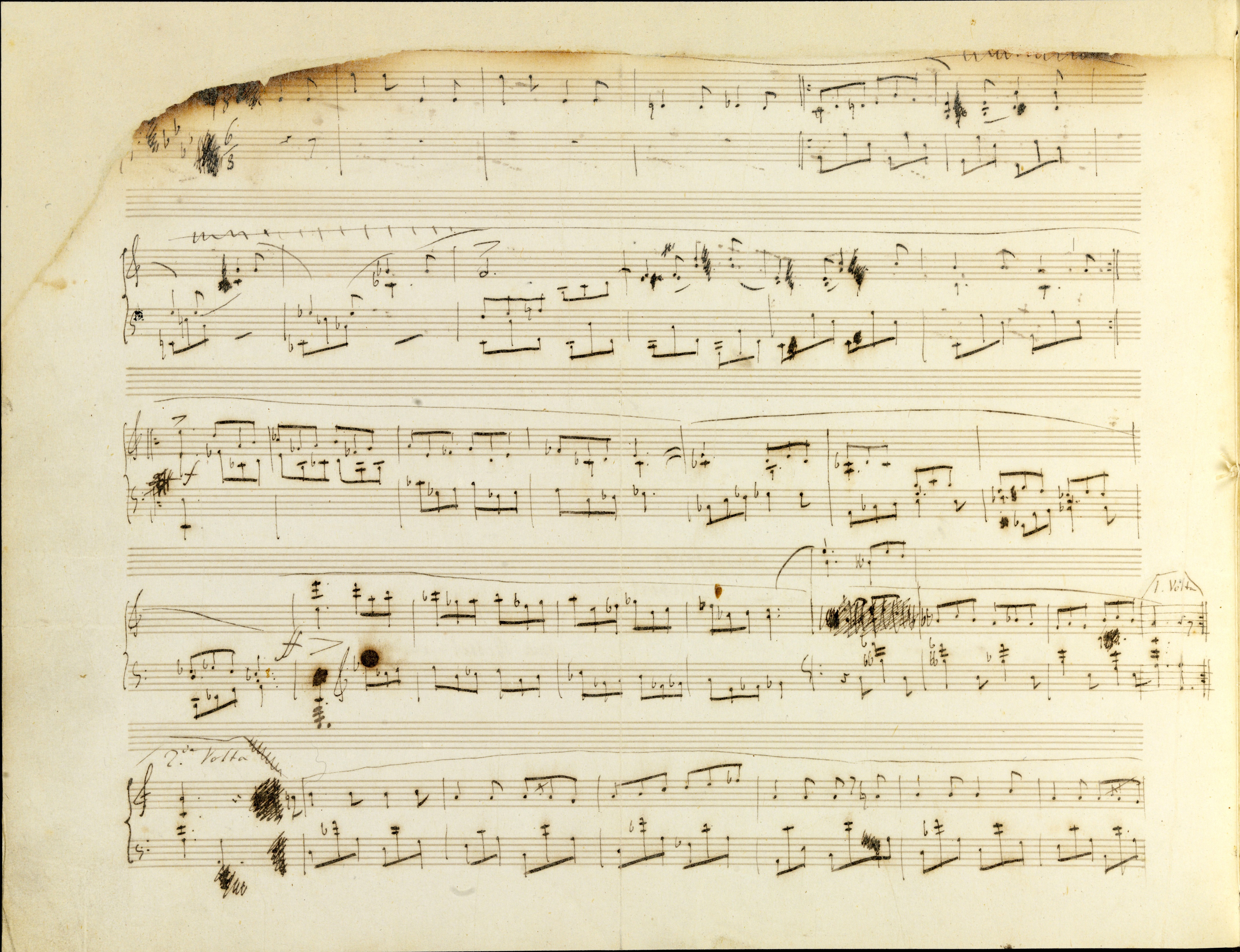



Page:
Source:
p. 2, b. 1-57
A - Autograph
Prezentacja
Select

Given that there is g in the previous and next bar we may assume that the inner note of the chord in the second half of b. 25 per Chopin's intention was supposed to be g
in the previous and next bar we may assume that the inner note of the chord in the second half of b. 25 per Chopin's intention was supposed to be g as well, and Chopin must have overseen
as well, and Chopin must have overseen  . However, the version with g is no less satisfactory in musical terms, hence, assuming that Chopin's notation is correct we propose it for the main text.
. However, the version with g is no less satisfactory in musical terms, hence, assuming that Chopin's notation is correct we propose it for the main text.
See b. 25
Compare the passage in the sources »
category imprint: Interpretations within context; Differences between sources
issues: GE revisions, Omission of current key accidentals
notation: Pitch





